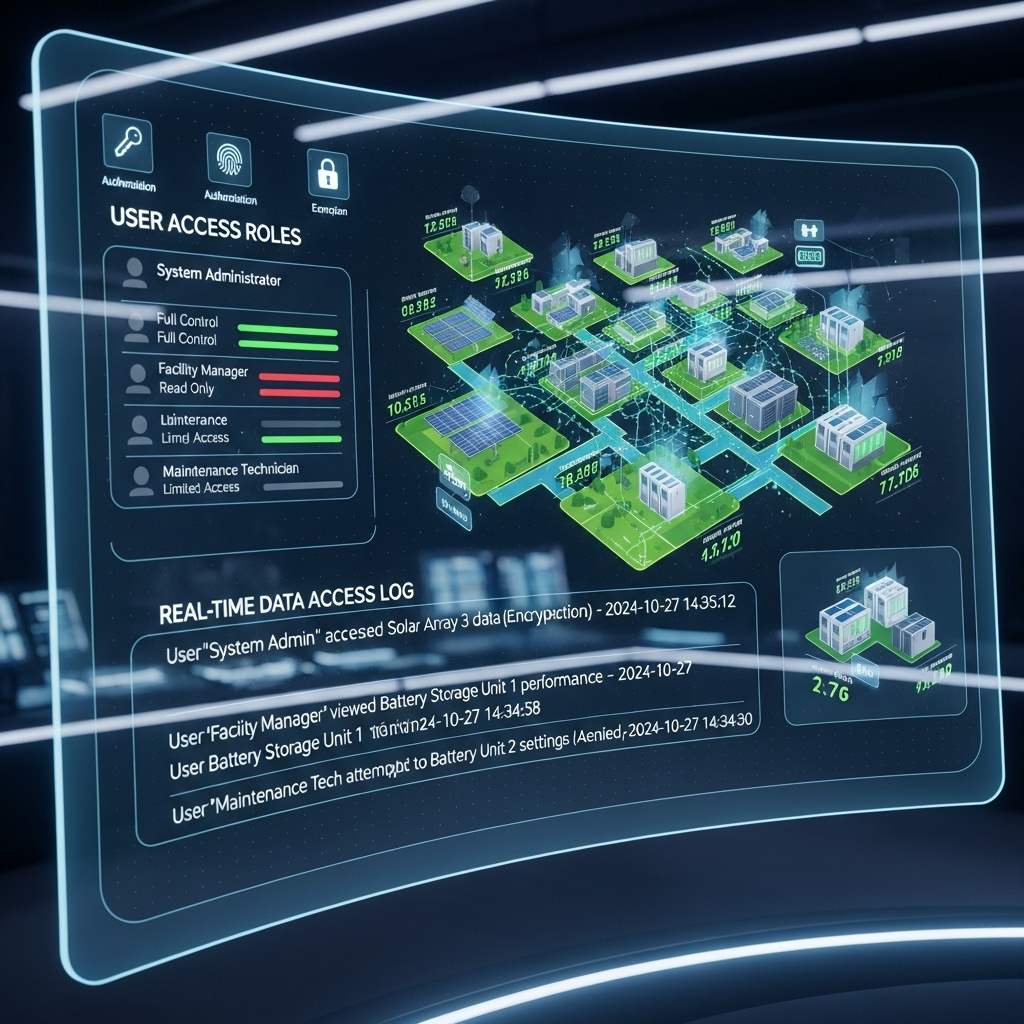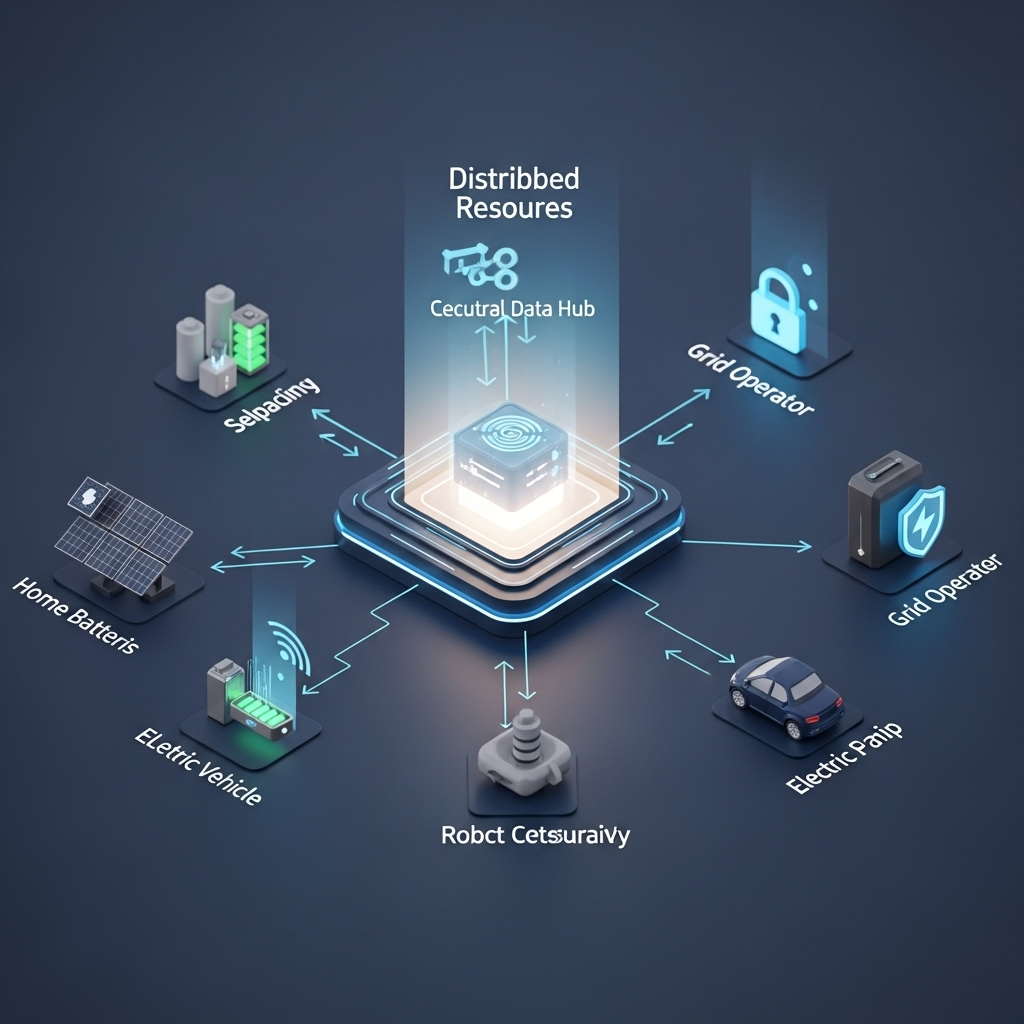The rise of Distributed Energy Resources (DERs) is reshaping our energy landscape. As a vendor, you are at the forefront of this change, providing innovative solar and storage solutions. With this opportunity comes a significant responsibility: securing your technology against cyber threats. As regulatory scrutiny intensifies, passing cybersecurity audits is no longer optional; it is a prerequisite for business. This text outlines seven fundamental cybersecurity controls to help you meet DER cybersecurity compliance and safeguard your operations.
Foundations of Access: Identity and Authorization
Controlling who can access your systems is the first line of defense. Without strong identity controls, even the most advanced security measures can be bypassed. Effective access management ensures that only authorized individuals and systems can interact with your DERs.
1. Strong Authentication
Authentication verifies the identity of anyone or anything attempting to access your systems. It's crucial to move beyond simple passwords. Implementing multi-factor authentication (MFA) adds a critical layer of security, requiring a second form of verification, such as a code from a mobile app. This practice helps enforce the 'least-privilege' rule, granting users access only to the data and systems essential for their roles. As noted in a report on securing energy networks, authentication is a critical aspect of modern security architectures, allowing system operators and asset owners to grant permission to access and control DERs securely.
2. Effective Password Management
Weak or default passwords are a common entry point for attackers. Establish a strict password policy that requires complexity, regular changes, and prohibits the use of easily guessable credentials. This simple step is highly effective in protecting devices from brute-force cyberattacks, where an attacker systematically tries all possible password combinations.
Protecting Data in Motion
DERs constantly communicate with utility networks, aggregators, and end-users. This data, which includes operational commands and performance metrics, must be protected as it travels across networks. Internet-based communication is increasingly vital for power system operation, making robust cybersecurity a critical factor for supply security, a point highlighted in the Grid Codes for Renewable Powered Systems report.
3. Transport Layer Security (TLS) Encryption
TLS is a cryptographic protocol that ensures privacy and data integrity between communicating applications. By using TLS, you encrypt data in transit, making it unreadable to anyone who might intercept it. This protects your systems against common attacks like eavesdropping and man-in-the-middle attacks, where an attacker secretly relays and possibly alters the communications between two parties.
4. Certificate Revocation and Management
Digital certificates are used to authenticate the identity of a device or user. However, these certificates can expire or become compromised. A Certificate Revocation List (CRL) is a list of digital certificates that have been revoked and should no longer be trusted. Proper management of these lists helps protect your network from data spoofing attacks, where an attacker impersonates a legitimate device.
Ensuring System Integrity and Resilience
Your devices must be resilient to attacks and capable of recovery. This involves securing the hardware itself and the software that runs on it. The goal is to ensure your systems operate as intended and can bounce back from a security event.
5. Secure Firmware Updates with Rollback
Firmware updates are necessary to add features and patch vulnerabilities. However, a malicious update could compromise your entire fleet of devices. Implement a secure update process that verifies the authenticity and integrity of firmware files. Additionally, include the ability to perform a 'rollback' to a previous, trusted firmware version. This capability is vital for recovering from malware embedded in a faulty or malicious update. Maintaining system integrity through updates is also key to optimal system operation. You can learn about key operational metrics in this ultimate reference for solar storage performance.
6. Physical Security Measures
Cybersecurity extends to the physical world. DERs are often installed in remote or easily accessible locations, making them vulnerable to tampering. Institute adequate physical security to protect hardware from malicious actions and prevent unauthorized access. This can include locked enclosures, surveillance, and tamper-detection alarms.
Vigilance and Proactive Defense
A 'set it and forget it' approach to security is insufficient. Continuous monitoring and a clear plan for responding to incidents are essential for maintaining a strong security posture. The National Institute of Standards and Technology (NIST) Cybersecurity Framework provides a comprehensive approach covering five major functions: identify, protect, detect, respond, and recover.
7. System Logging and Monitoring
Logging records observable events on a system. These logs are invaluable for detecting suspicious activity and for forensic analysis after an incident. By actively monitoring logs from security devices and operational technology, you can identify potential threats before they cause significant damage. Greater monitoring capabilities present an excellent opportunity for constant improvement, as mentioned in the China Power System Transformation analysis.
Summary of Key Cybersecurity Controls
| Control | Risk Mitigated | Implementation Best Practice |
|---|---|---|
| Strong Authentication | Unauthorized access, privilege escalation | Implement Multi-Factor Authentication (MFA) and Role-Based Access Control (RBAC). |
| Password Management | Brute-force attacks, credential stuffing | Enforce complex, unique passwords and eliminate default credentials. |
| TLS Encryption | Eavesdropping, man-in-the-middle attacks | Use current TLS versions for all external communications. |
| Certificate Management | Impersonation, data spoofing | Maintain a Certificate Revocation List (CRL) and automate certificate lifecycle. |
| Secure Firmware Updates | Malware injection, system compromise | Digitally sign all firmware and enable rollback capabilities. |
| Physical Security | Tampering, theft, unauthorized physical access | Use locked enclosures, tamper alerts, and access logs for hardware. |
| System Logging | Undetected breaches, delayed incident response | Aggregate logs in a central system and set up automated alerts for anomalies. |
Building a Secure Energy Future
Passing a cybersecurity audit is a validation that your products and systems are built on a foundation of security. By implementing these seven controls—spanning access management, data protection, system integrity, and monitoring—you not only prepare for audits but also build trust with utilities, aggregators, and customers. In a connected world where national DER capacity is expected to grow significantly, a coordinated and robust approach to cybersecurity is not just good practice; it is essential for the reliability and security of the future grid.
Frequently Asked Questions
Why is cybersecurity particularly important for DER vendors?
DER vendors are a critical part of the energy supply chain. A vulnerability in a vendor's product could potentially be exploited across thousands of installations, creating a widespread risk to grid stability and data privacy. Therefore, robust DER cybersecurity compliance is essential to ensure the resilience of the entire energy ecosystem.
What is the NIST Cybersecurity Framework?
The National Institute of Standards and Technology (NIST) Cybersecurity Framework is a set of voluntary guidelines, standards, and best practices to help organizations manage cybersecurity-related risk. It is widely regarded as a thorough and holistic approach, organized around five core functions: Identify, Protect, Detect, Respond, and Recover.
How can smaller DER vendors implement these controls effectively?
Smaller vendors can start by focusing on foundational controls like strong password management, MFA, and secure remote access. Leveraging cloud services with built-in security features can also be a cost-effective strategy. The key is to adopt a risk-based approach, prioritizing the controls that address the most significant threats to your specific products and customers.





Leave a comment
All comments are moderated before being published.
This site is protected by hCaptcha and the hCaptcha Privacy Policy and Terms of Service apply.